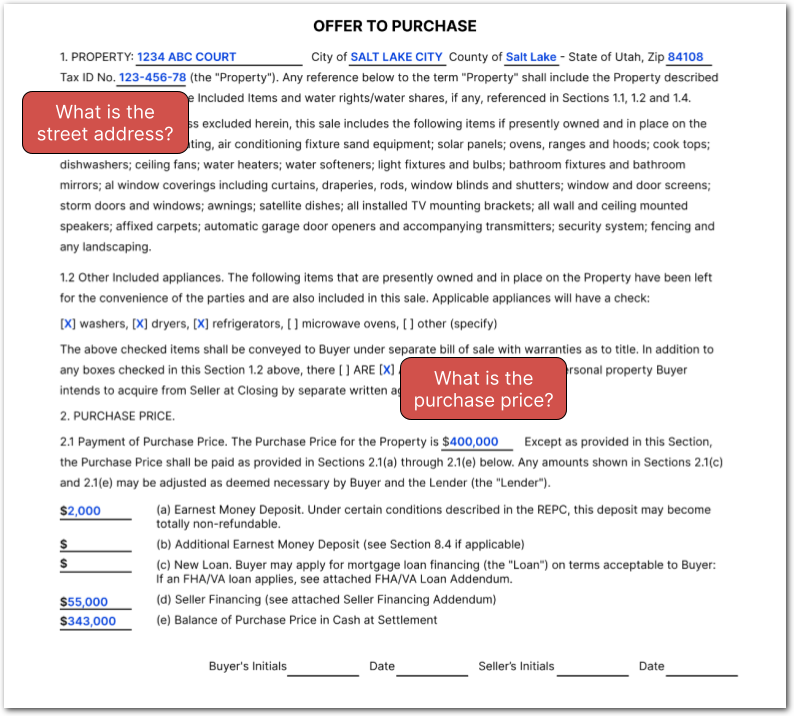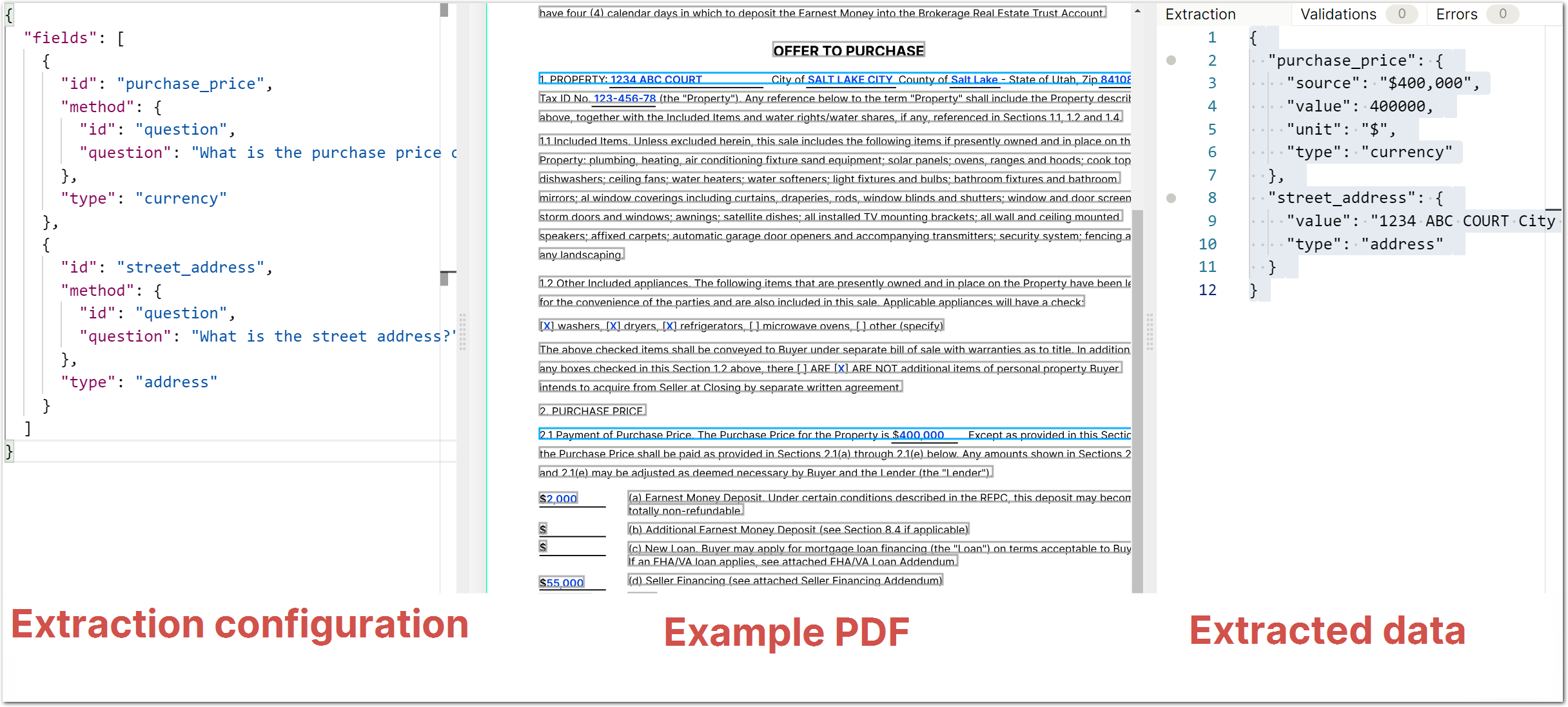sensible-api
Advanced tools
sensible-api - npm Package Compare versions
Comparing version 0.0.3 to 0.0.4
| { | ||
| "name": "sensible-api", | ||
| "version": "0.0.3", | ||
| "version": "0.0.4", | ||
| "description": "Javascript SDK for Sensible, the developer-first platform for extracting structured data from documents so that you can build document-automation features into your SaaS products", | ||
| "keywords": ["IDP","parsing","conversion","openai","processing","csv","excel","convert","json","LLMs","pdf","png","tiff","jpeg","doc","docx","document","text","data","extraction","extract","classification","classify","sensible","openapi","gpt-3","gpt-4","senseml","automation","sdk","query","document-processing"," intelligent-document-processing"," pdf-conversion"," pdf-extraction"," document-extraction"," pdf-crawler","pdf-parser","pdf-extract","pdf-to-data","document-data-extraction","document-automation"], | ||
| "keywords": ["IDP","parsing","conversion","openai","processing","csv","excel","convert","json","LLMs","pdf","png","tiff","jpeg","doc","docx","document","text","data","extraction","extract","classification","classify","sensible","openapi","gpt-3","gpt-4","senseml","automation","sdk","query","document-processing"," intelligent-document-processing"," pdf-conversion"," pdf-extraction"," document-extraction"," pdf-crawler","pdf-parser","pdf-extract","pdf-to-data","document-data-extraction","document-automation","sensible-api"], | ||
| "license": "MIT", | ||
@@ -7,0 +7,0 @@ "homepage": "https://github.com/sensible-hq/sensible-api-js", |
213
README.md
| # sensible-api | ||
| Open-source Sensible SDK for Javascript/Typescript | ||
| Open-source Sensible SDK for Node/Typescript | ||
| Welcome! Sensible is a developer-first platform for extracting structured data from documents, for example, business forms in PDF format. use Sensible to build document-automation features into your vertical SaaS products. Sensible is highly configurable: you can get simple data in minutes by leveraging GPT-4 and other large-language models (LLMs), or you can tackle complex and idiosyncratic document formatting with Sensible's powerful document primitives. For more information, see [Javascript SDK quickstart](https://docs.sensible.so/docs/quickstart-javascript). | ||
| Welcome! Sensible is a developer-first platform for extracting structured data from documents, for example, business forms in PDF format. use Sensible to build document-automation features into your vertical SaaS products. Sensible is highly configurable: you can get simple data in minutes by leveraging GPT-4 and other large-language models (LLMs), or you can tackle complex and idiosyncratic document formatting with Sensible's powerful document primitives. | ||
|  | ||
| ## Overview | ||
| The Sensible Node SDK is a simplification of the [Sensible API](https://docs.sensible.so/reference/choosing-an-endpoint). Use the Sensible Node SDK to: | ||
| - [Extract](#extract-document-data): Extract structured data from your custom documents. Configure the extractions for a set of similar documents, or *document type*, in the Sensible app or Sensible API, then you run extractions for documents of the type with this SDK. | ||
| - [Classify](#classify): Classify documents by the types you define, for example, bank statements or tax forms. Use classification to determine which documents to extract prior to calling a Sensible extraction endpoint, or route each document in a system of record. | ||
| ## Install | ||
| In an environment in which you've installed Node, create a directory for a test project, open a command prompt in the directory, and install the dependencies: | ||
| ```shell | ||
| npm install sensible-api | ||
| ``` | ||
| To import Sensible and other dependencies to your project, create an `index.mjs` file in your test project, and add the following lines to the file: | ||
| ```node | ||
| import { SensibleSDK } from "sensible-api"; | ||
| ``` | ||
| ## Initialize | ||
| Get an account at [sensible.so](https://app.sensible.so/register) if you don't have one already. | ||
| To initialize the dependency, paste the following code into your `index.mjs` file and replace `YOUR_API_KEY` with your [API key](https://app.sensible.so/account/): | ||
| ```node | ||
| const sensible = new SensibleSDK(YOUR_API_KEY); | ||
| ``` | ||
| **Note** In production ensure you secure your API key, for example as a GitHub secret. | ||
| ## Extract document data | ||
| #### Option 1: document URL | ||
| To extract data from a sample document at a URL: | ||
| 1. Paste the following code into your `index.mjs` file: | ||
| ```node | ||
| const request = await sensible.extract({ | ||
| url: "https://github.com/sensible-hq/sensible-docs/raw/main/readme-sync/assets/v0/pdfs/contract.pdf", | ||
| documentType: "sensible_instruct_basics", | ||
| environment: "development" // see Node SDK reference for full list of configuration options | ||
| }); | ||
| const results = await sensible.waitFor(request); // waitFor is optional if you configure a webhook | ||
| console.log(results); // see Node SDK reference to convert results from JSON to Excel | ||
| ``` | ||
| 2. In a command prompt in the same directory as your `index.mjs` file, run the code with the following command: | ||
| ```shell | ||
| node index.mjs | ||
| ``` | ||
| The code extracts data from an example document (`contract.pdf`) using an example document type (`sensible_instruct_basics`) and an example extraction configuration. | ||
| #### Option 2: local file | ||
| To extract from a local file: | ||
| 1. Download the following example file and save it in the same directory as your `index.mjs` file: | ||
| | Example document | [Download link](https://github.com/sensible-hq/sensible-docs/raw/main/readme-sync/assets/v0/pdfs/contract.pdf) | | ||
| | ---------------- | ------------------------------------------------------------ | | ||
| 2. Paste the following code into your `index.mjs` file, then run it according to the steps in the previous option: | ||
| ```node | ||
| const request = await sensible.extract({ | ||
| path: ("./contract.pdf"), | ||
| documentType: "sensible_instruct_basics", | ||
| }); | ||
| const results = await sensible.waitFor(request); // waitFor is optional if you configure a webhook | ||
| console.log(results); // see Node SDK reference to convert results from JSON to Excel | ||
| ``` | ||
| This code uploads your local file to a Sensible-hosted URL and extracts data from an example document (`contract.pdf`) using an example document type (`sensible_instruct_basics`) and an example extraction configuration. | ||
| #### Check results | ||
| The following excerpt of the results shows the extracted document text in the `parsed_document` object: | ||
| ```json | ||
| { | ||
| "purchase_price": { | ||
| "source": "$400,000", | ||
| "value": 400000, | ||
| "unit": "$", | ||
| "type": "currency" | ||
| }, | ||
| "street_address": { | ||
| "value": "1234 ABC COURT City of SALT LAKE CITY County of Salt Lake -\nState of Utah, Zip 84108", | ||
| "type": "address" | ||
| } | ||
| } | ||
| ``` | ||
| For more information about the response body schema, see [Extract data from a document](https://docs.sensible.so/reference/extract-data-from-a-document) and expand the 200 responses in the middle pane and the right pane to see the model and an example, respectively. | ||
| #### Optional: understand extraction | ||
| Navigate to https://app.sensible.so/editor/instruct/?d=sensible_instruct_basics&c=contract&g=contract to see how the extraction you just ran works in the Sensible app. You can add more fields to the extraction configuration to extract more data: | ||
|  | ||
| #### Complete code example | ||
| See the following code for a complete example of how to use the SDK for document extraction in your own app. | ||
| ```node | ||
| import { SensibleSDK } from "sensible-api" | ||
| const sensible = new SensibleSDK(YOUR_API_KEY); | ||
| const request = await sensible.extract({ | ||
| path: ("./contract.pdf"), | ||
| documentType: "sensible_instruct_basics", | ||
| environment: "development" // see Node SDK reference for configuration options | ||
| }); | ||
| const results = await sensible.waitFor(request); // waitFor is optional if you configure a webhook | ||
| console.log(results); // see Node SDK reference to convert results from JSON to Excel | ||
| ``` | ||
| ## Classify | ||
| You can classify a document by its similarity to each document type you define in your Sensible account. For example, if you define a [bank statements](https://github.com/sensible-hq/sensible-configuration-library/tree/main/bank_statements) type and a [tax_forms](https://github.com/sensible-hq/sensible-configuration-library/tree/main/tax_forms) type in your account, you can classify 1040 forms, 1099 forms, Bank of America statements, Chase statements, and other documents, into those two types. | ||
| See the following code example for classifying a document. | ||
| ```node | ||
| const request = await sensible.classify({path: "./boa_sample.pdf"}); | ||
| const results = await sensible.waitFor(request); | ||
| ``` | ||
| To classify an example document, take the following steps: | ||
| 1. Follow the steps in [Out-of-the-box extractions](https://docs.sensible.so/reference/choosing-an-endpoint/library-quickstart) to add support for bank statements to your account. | ||
| 2. Follow the steps in the preceding sections to install and initialize the SDK. | ||
| 3. Download the following example file and save it in the same directory as your `index.mjs` file: | ||
| | Example document | [Download link](https://github.com/sensible-hq/sensible-configuration-library/raw/main/bank_statements/bank_of_america/boa_sample.pdf) | | ||
| | ---------------- | ------------------------------------------------------------ | | ||
| 4. Paste the preceding code into your `index.mjs` file. Ensure you replaced`YOUR_API_KEY` with your [API key]((https://app.sensible.so/account/) and `YOUR_DOCUMENT.pdf` with `boa_sample.pdf`. See the following code example to check your code completeness. | ||
| 5. In a command prompt in the same directory as your `index.mjs` file, run the code with the following command: | ||
| ```shell | ||
| node index.mjs | ||
| ``` | ||
| #### Check results | ||
| The following excerpt of the results shows the extracted document text in the `TO_DO` object: | ||
| ```json | ||
| { | ||
| "document_type": { | ||
| "id": "22666f4f-b8d6-4cb5-ad52-d00996989729", | ||
| "name": "bank_statements", | ||
| "score": 0.8922476745112722 | ||
| }, | ||
| "reference_documents": [ | ||
| { | ||
| "id": "c82ac28e-7725-4e42-b77c-e74551684caa", | ||
| "name": "boa_sample", | ||
| "score": 0.9999980536061833 | ||
| }, | ||
| { | ||
| "id": "f80424a0-58f8-40e7-814a-eb49b199221e", | ||
| "name": "wells_fargo_checking_sample", | ||
| "score": 0.8946129923339182 | ||
| }, | ||
| { | ||
| "id": "cf17daf8-7e8b-4b44-bc4b-7cdd6518d963", | ||
| "name": "chase_consolidated_balance_summary_sample", | ||
| "score": 0.8677569417649393 | ||
| } | ||
| ] | ||
| } | ||
| ``` | ||
| #### Complete code example | ||
| Here's a complete example of how to use the SDK for document classification in your own app: | ||
| ```node | ||
| import { SensibleSDK } from "sensible-api" | ||
| const sensible = new SensibleSDK(YOUR_API_KEY); | ||
| const request = await sensible.classify({path:"./boa_sample.pdf"}); | ||
| const results = await sensible.waitFor(request); | ||
| console.log(results); | ||
| ``` | ||
| ## Next | ||
| For configuration options, see [Node SDK reference](https://docs.sensible.so/docs/sdk-node). | ||
New alerts
License Policy Violation
LicenseThis package is not allowed per your license policy. Review the package's license to ensure compliance.
Found 1 instance in 1 package
Fixed alerts
License Policy Violation
LicenseThis package is not allowed per your license policy. Review the package's license to ensure compliance.
Found 1 instance in 1 package
Improved metrics
- Total package byte prevSize
- increased by34.87%
32220
- Number of lines in readme file
- increased by2985.71%
216
No dependency changes